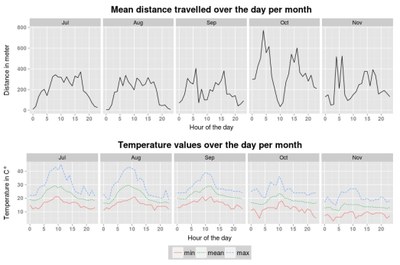Post-release movement pattern analysis of a brown bear in the Lesser Caucasus
Florian Pötzschner
The processes of species reintroduction and relocation to a suited habitat is an import tool for wildlife conservation, which itself is crucial for preserving ecosystems and their functioning in the advancing Anthropocene. However, as until today still many of such reintroductions fail, with negative consequences for the respective animals and/or ecosystems, more research is needed on animals’ behavior after their release. This thesis studied the GPS collar-tracked movement of a young female brown bear (Ursus arctos) for a period of five months after its release in southern Armenia. Therefore, the bear’s movement was divided into active and active plus passive steps in order to compare the environmental factors found at the end of these steps to those factors surrounding endpoints of corresponding potential steps, which could have been undertaken instead. The aim of this procedure was to detect potential changes of movement and habitat preferences. The result of a descriptive analysis and a pairwise conditional logistic regression revealed that the brown bear’s movement, which is widely used as a proxy for behavior in the field of ecology, followed an expected seasonal cycle and was related to forest edge density, slope of elevation and the length of season. These findings, in addition to no report and no detection of conflicts with humans, lead to the conclusion that the relocation was successful.

